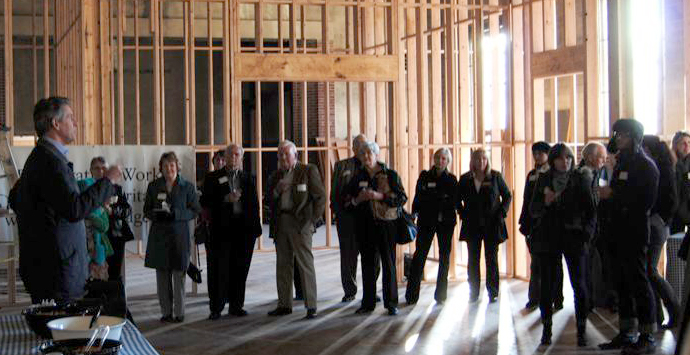
Saving and stabilizing neighborhoods has been a hallmark of Richard E. Dover and Family Pride Corporation’s work for more than 20 years. Inner-city rehab and historic projects have played a major role in his career. Richard E. Dover and Family Pride Corporation have targeted structures for redevelopment, thus improving neighborhoods all over the country. According to Richard E. Dover, preserving historic structures connects a community to its heritage, which is the glue that holds a community together. Below, Richard E. Dover notes why architectural preservation is so important.
Information Nation: Thank you for joining us today, Mr. Richard E. Dover.
Richard E. Dover: It’s my pleasure. Thank you for having me.
Information Nation: Rehabilitation has played a major role in your career. In what ways does restoration contribute to a neighborhood?
Richard E. Dover: Preservation is good for a neighborhood because it promotes respect for those who came before us. Ultimately, it also promotes respect for those who come after us. It encourages citizens to become active in their own community because they feel a sense of responsibility to create their community’s future.
Information Nation: Does a restored historic building add value to other homes?
Richard E. Dover: Yes. Vacant and underused buildings reduce property values fast. Homeowners don’t want a debilitated building on their street. Property values remain on the rise in historic cities.
Information Nation: Does restoration help local businesses?
Richard E. Dover: Rehabilitation is great for the local economy. It brings more jobs and dollars to locals. Restoration is more labor intensive than new construction, so it creates more jobs in the community. And since more materials are purchased locally, the local economic impact increases.
Information Nation: Can you give an example?
Richard E. Dover: Sure. The difference in benefits between spending $1 million in new construction versus spending $1 million in rehabilitation is $120,000, which will stay in the community, ultimately leading to an increase in household income and retail businesses.
Information Nation: Donald Trump once said that it’s cheaper to use an existing building than to build a new one. Is that true?
Richard E. Dover: Not only is it cheaper, but better for the environment. Rehabilitation is the ultimate in recycling since it keeps the highly toxic construction waste out of the landfill. If an old building gets demolished, the cost of demolition must also be factored in.
Information Nation: Can you describe what goes to waste when a building is demolished?
Richard E. Dover: When a building is demolished, much of its embodied energy goes to waste. Energy such as excavation, manufacturing, transportation, the assembly of glass, bricks, wood, steel, and whatever else was used in that building can be saved with preservation.
Information Nation: Are traditional buildings different from new construction in terms of green practice?
Richard E. Dover: Many traditional structures were created with going green in mind. Covered porches, thick walls, attics and cellars all control the building’s temperature. We don’t see this much in newer construction.
Information Nation: What’s so special about older buildings?
Richard E. Dover: The charm of historic buildings is priceless. Old buildings give personality to a community. They make a community unique.
Information Nation: What are old buildings used for after restoration?
Richard E. Dover: We have converted old schools into assisted living centers, a barn into a family home, and another facility into a restaurant. Old buildings can be used for residential and commercial purposes.
Information Nation: What are you currently working on?
Richard E. Dover: We are in the process of transforming an old inn into a retirement home. The building will house a special wing for Alzheimer’s and dementia patients.
Information Nation: How long will it take to finish?
Richard E. Dover: We anticipate six to 12 months of work. It’s a great building and we want to be sure to keep as much of the original beauty as possible.
Richard E. Dover is passionate about historic structures and has preserved numerous buildings in Tennessee, North Carolina and Florida. Richard E. Dover places an emphasis on creating affordable senior living communities from unused, historic properties. Richard E. Dover resides in Tennessee.
 InformatioNation InformatioNationBlog.com
InformatioNation InformatioNationBlog.com